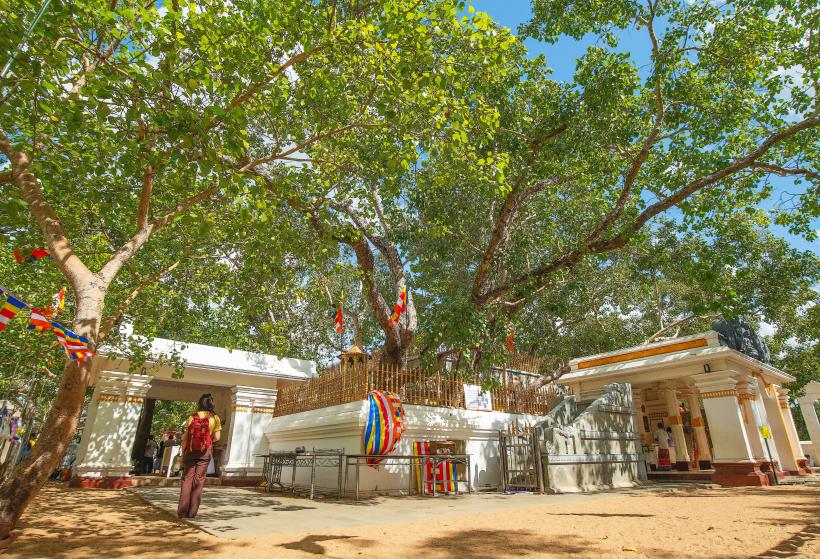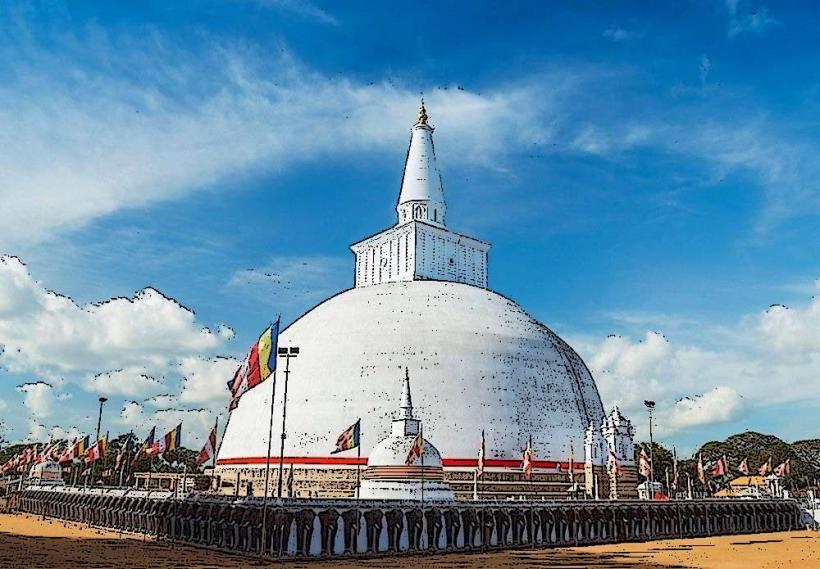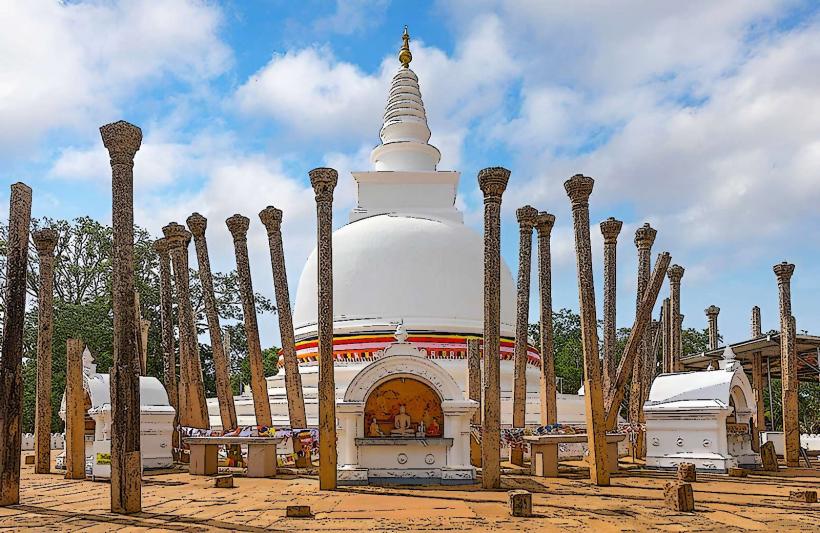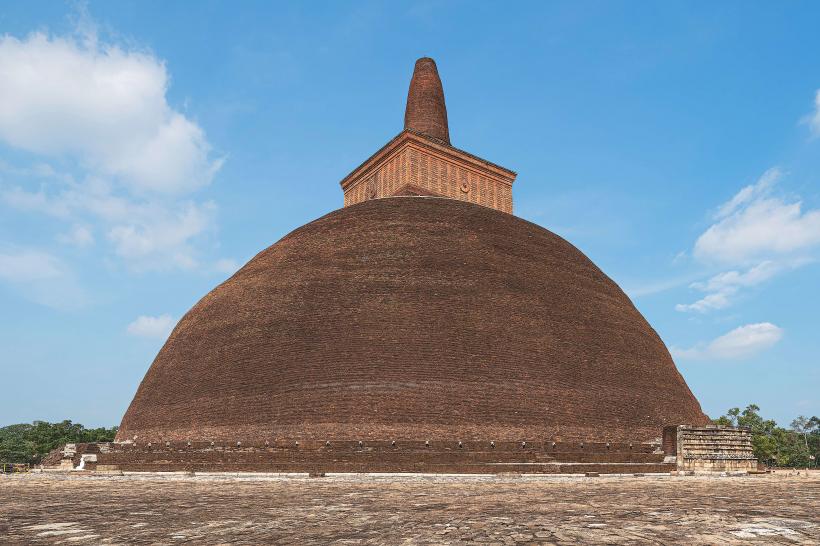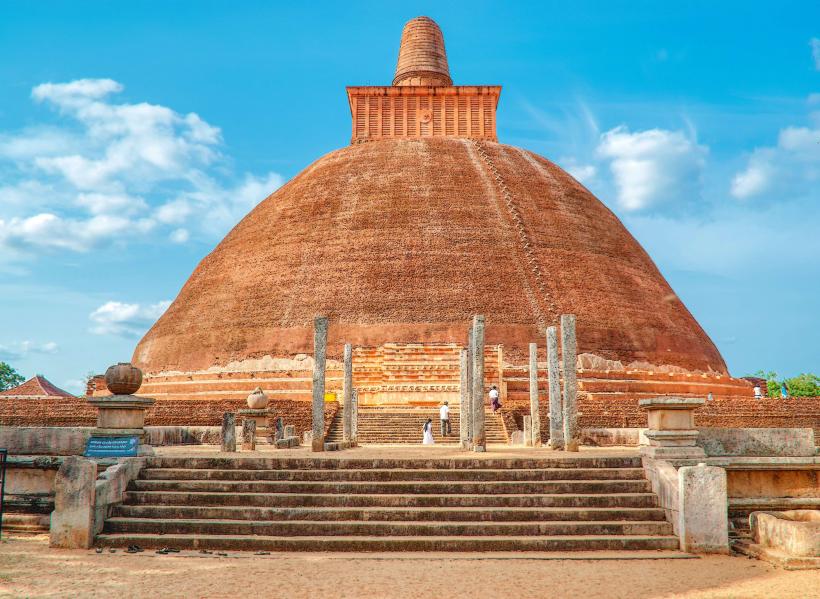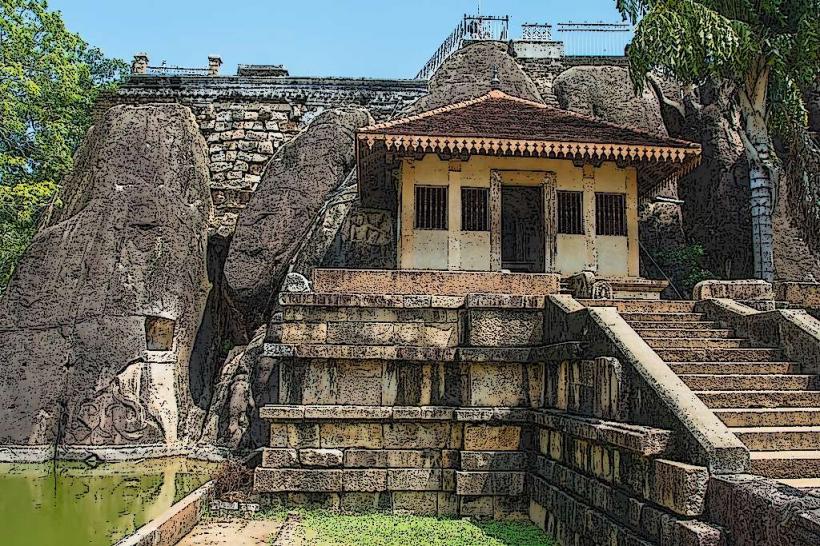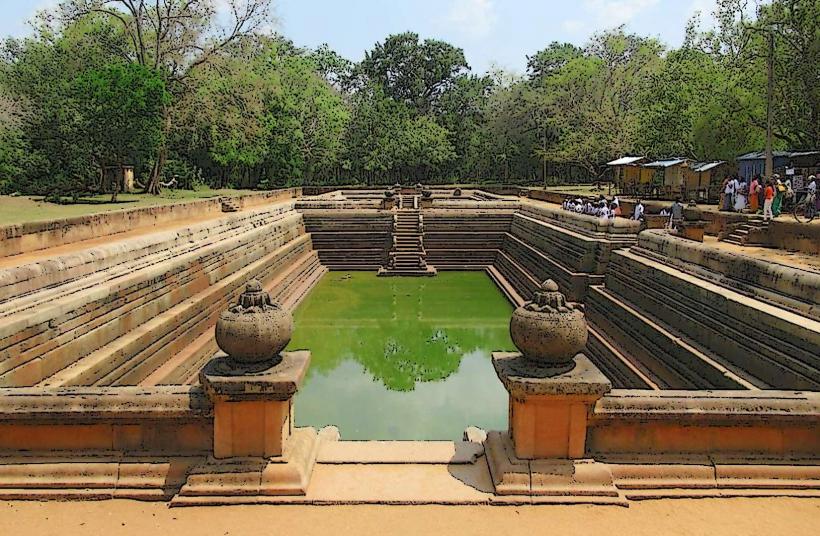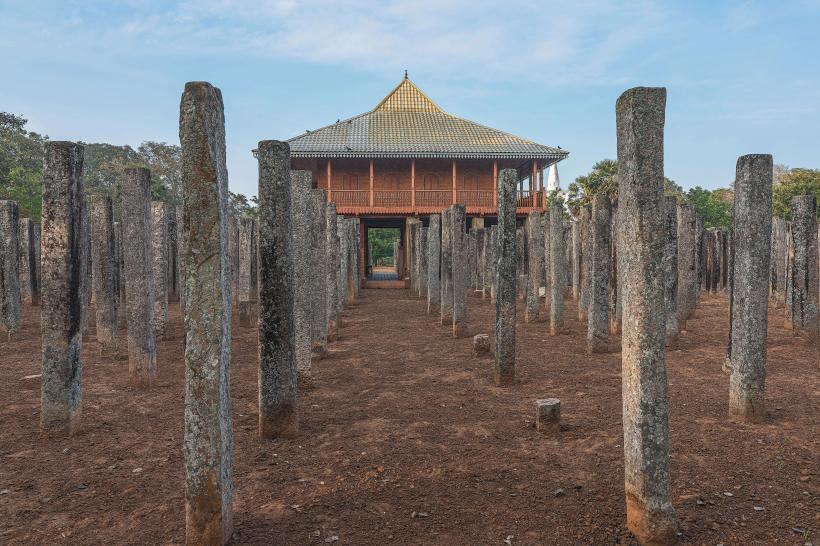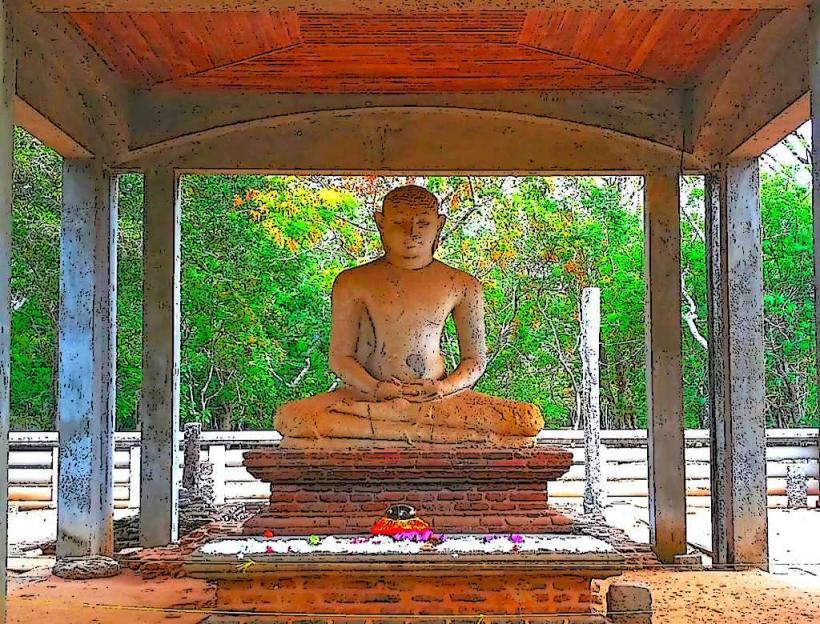Information
Landmark: MihintaleCity: Anuradhapura
Country: Sri Lanka
Continent: Asia
Mihintale, Sri Lanka
Mihintale is one of the most significant historical and religious sites in Sri Lanka, located about 12 kilometers east of Anuradhapura, in the North Central Province. It is a mountainous region that holds immense importance in Sri Lankan Buddhist history. Mihintale is famous as the site where Mahinda, a Buddhist monk from India, is believed to have introduced Buddhism to Sri Lanka in the 3rd century BCE, marking the beginning of Sri Lanka’s adoption of Buddhism.
Overview
- Name: Mihintale
- Location: Near Anuradhapura, North Central Province, Sri Lanka
- Elevation: Approximately 1,000 feet (305 meters) above sea level
- Significance: Buddhist pilgrimage site, historical monument, and religious complex
- Accessibility: Accessible by road from Anuradhapura; visitors typically climb the mountain's steps to reach the summit
Historical and Religious Importance
Introduction of Buddhism:
- The central historical event associated with Mihintale is the introduction of Buddhism to Sri Lanka. Mahinda, who was sent by Emperor Ashoka of India, met King Devanampiya Tissa of Sri Lanka at Mihintale in 247 BCE. After a discussion on the teachings of the Buddha, King Tissa embraced Buddhism and became the first Sri Lankan monarch to officially adopt Buddhism.
- Following this event, Mihintale became a center of Buddhist activity, and Buddhist monasticism flourished in the region, with numerous monasteries, stupas, and other religious buildings established.
Buddhist Monastery Complex:
- Over the centuries, Mihintale developed into a major Buddhist monastery complex, attracting monks and pilgrims from all over the island and beyond. The area includes several ancient structures, such as stupas, temples, monastic cells, and sacred ponds, which were built to support the Buddhist community and provide a place for meditation and study.
Key Features and Attractions
Mihintale Rock:
- The central feature of Mihintale is the Mihintale Rock, a large granite hill with a clear view of the surrounding countryside. The summit of this rock is where it is believed that Mahinda met King Tissa and delivered the teachings of the Buddha. The rock is now accessed by a series of 1,840 stone steps leading to the top. The steps are lined with stone lamps, which were used to illuminate the way for pilgrims.
Ambasthala Stupa:
- The Ambasthala Stupa is one of the oldest stupas at Mihintale. It is believed to be the place where Mahinda gave his first sermon to King Tissa and his court. The stupa stands as a symbol of the introduction of Buddhism to Sri Lanka and is an essential feature of the site.
Sri Maha Stupa:
- The Sri Maha Stupa is another important stupa located at Mihintale. It is one of the largest and most significant stupas in the region, and it houses relics of the Buddha. The stupa is an important pilgrimage site for Buddhists and is surrounded by smaller structures and ruins.
Meditation Area and Monasteries:
- In addition to the stupas and temples, Mihintale also features a number of meditation areas and ancient monastic cells that were once used by Buddhist monks. These areas are peaceful and serene, offering visitors a chance to experience the tranquil environment that was once home to a thriving monastic community.
Sila Tank:
- The Sila Tank is an ancient reservoir located at Mihintale. It is believed to have been constructed by the monks to provide water for the monastery and the surrounding area. The tank is an important example of ancient Sri Lankan engineering and water management.
The Lion’s Peak (Simhagala):
- The Lion’s Peak or Simhagala is the highest point in Mihintale. It is accessed via a series of steps and offers panoramic views of the surrounding area. The Lion’s Peak is considered a sacred site for pilgrims, and it is associated with the legend of Mahinda’s arrival in Sri Lanka.
Cultural and Religious Significance
- Sacred to Buddhists:
- Mihintale is one of Sri Lanka’s most sacred Buddhist sites and is regularly visited by pilgrims who come to pay homage to the Buddha and celebrate the introduction of Buddhism to the island. The site is especially significant during full moon days (Poya days), when large numbers of people visit to participate in religious observances.
- Symbol of Sri Lanka’s Buddhist Identity:
- Mihintale is not only a key historical site but also a symbol of Sri Lanka’s deep-rooted Buddhist identity. The site represents the unity of the Sri Lankan people under the banner of Buddhism and highlights the cultural and spiritual importance of Buddhism in the country.
Visitor Experience
Climbing to the Summit:
- Visitors to Mihintale typically begin their journey at the base of the mountain and climb the 1,840 stone steps to reach the summit. The climb is relatively steep, but the journey is rewarding, offering a sense of spiritual connection with the place. Along the way, visitors can admire the ancient stone lamps, historical inscriptions, and views of the surrounding landscape.
Tour of the Monastic Complex:
- Once at the top, visitors can explore the ancient monastic complex, including the stupas, temples, monasteries, and meditation areas. There are also guides available to provide information on the history and significance of the various structures.
Historical Sites and Ruins:
- The surrounding area is filled with historical ruins and remnants of the ancient monastery. Visitors can wander through the ruins of stone walls, pillars, and small shrines, gaining a sense of what the area must have looked like during its peak as a Buddhist center.
Respectful Pilgrimage Site:
- As Mihintale is a highly sacred site, visitors are encouraged to dress modestly, remove their shoes before entering religious areas, and maintain a respectful attitude toward the site and its significance.
Nearby Attractions
Anuradhapura (12 km):
- Mihintale is located near Anuradhapura, the ancient capital of Sri Lanka. Anuradhapura is home to many other historical Buddhist sites, including the Sri Maha Bodhi Tree, Ruwanwelisaya Stupa, and Abhayagiri Stupa.
Wilpattu National Park (Approx. 40 km):
- For nature and wildlife enthusiasts, Wilpattu National Park is located to the northwest of Mihintale. It is one of Sri Lanka's largest national parks, known for its wildlife and natural beauty, including sightings of leopards, elephants, and a variety of bird species.
Conclusion
Mihintale stands as a historical and spiritual treasure in Sri Lanka, revered by Buddhists and visited by travelers seeking to experience its rich religious heritage. The site marks the momentous introduction of Buddhism to Sri Lanka and continues to attract pilgrims and tourists alike. With its stunning views, ancient monuments, and serene atmosphere, Mihintale is a must-visit destination for those interested in Sri Lanka’s Buddhist history and cultural legacy.

